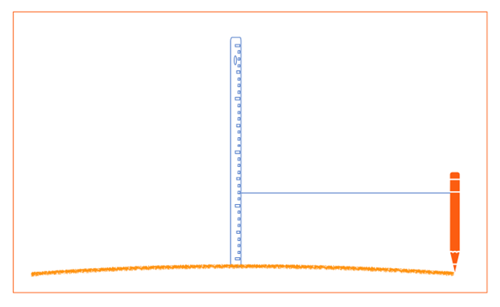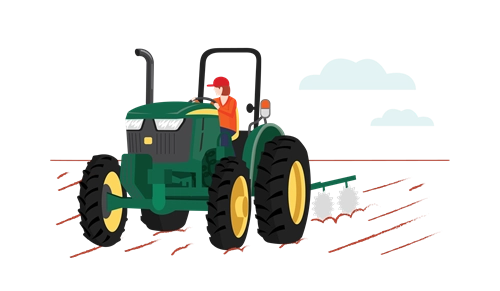-
Curriculum alignment
Mathematics
AC9M7N08 – Recognise, represent and solve problems involving ratios
AC9M7M06 – Use mathematical modelling to solve practical problems involving ratios; formulate problems, interpret and communicate solutions in terms of the situation, justifying choices made about the representation
AC9M8M07 – Use mathematical modelling to solve practical problems involving ratios and rates, including financial contexts; formulate problems; interpret and communicate s
Science
AC9S7U06 – Use a particle model to describe differences between pure substances and mixtures and apply understanding of properties of substances to separate mixtures
AC9S8U04 – Describe the key processes of the rock cycle, including the timescales over which they occur, and examine how the properties of sedimentary, igneous and metamorphic rocks reflect their formation and influence their use
AC9S7I01 – Develop investigable questions, reasoned predictions and hypotheses to explore scientific models, identify patterns and test relationships
AC9S7I02 –Plan and conduct reproducible investigations to answer questions and test hypotheses, including identifying variables and assumptions and, as appropriate, recognising and managing risks, considering ethical issues and recognising key considerations regarding heritage sites and artefacts on Country/Place
AC9S7I03 – Select and use equipment to generate and record data with precision, using digital tools as appropriate
AC9S7I04 – Select and construct appropriate representations, including tables, graphs, models and mathematical relationships, to organise and process data and information
AC9S7I05 – Analyse data and information to describe patterns, trends and relationships and identify anomalies
AC9S7I07 – Construct evidence-based arguments to support conclusions or evaluate claims and consider any ethical issues and cultural protocols associated with using or citing secondary data or information
AC9S7I08 – Write and create texts to communicate ideas, findings and arguments for specific purposes and audiences, including selection of appropriate language and text features, using digital tools as appropriate
Design and Technologies
AC9TDE8K06 – Analyse how characteristics and properties of materials, systems, components, tools and equipment can be combined to create designed solutions
AC9TDE8P01 – Analyse needs or opportunities for designing, and investigate and select materials, components, tools, equipment and processes to create designed solutions
AC9TDE8P02 – Generate, test, iterate and communicate design ideas, processes and solutions using technical terms and graphical representation techniques, including using digital tools
AC9TDE8P03 – Select, justify and use suitable materials, components, tools, equipment, skills and processes to safely make designed solutions
- S
- T
- E
- M
Sandcastle ratios
Years 7 and 8
Learning hook
Ask students to guess how tall the tallest sandcastle ever built was, then share this article from the Guinness World Records, depicting the tallest sandcastle. It was made in Denmark in 2021 and measured 21.16m in height. The article includes a short clip showing the construction of the sandcastle.
Learning input
The study of sand is known as arenology, and a sand scientist is an arenologist. Sand is formed when rocks erode. The composition of sand is defined by its grain size; at least 50% of its particles has a diameter of 0.075mm to 4.75mm.
Students may not have observed the differences in various types of sand. As a class, reflect on trips to sandy places – were the sands all the same? What do students remember about the colour and texture of the sand in different places?
Next, collect samples of different sands from around the school or local environment. Around the class, set up work stations with magnifying glasses or microscopes (digital microscopes would be good for this activity). Set up each station with a piece of white paper in a petri dish and a sample of a sand. Students can add a small sample to the petri dish to observe it, as well as observing the colour and texture of the larger sample. Students can draw what they see, or annotate a digital image, including a scale. Encourage students to notice and represent the shape of the sand grains. Discuss any observed differences in the sands.
As a class, wonder about the origin of the sands, and how they fit into the rock cycle. Sand on beaches tends to have had all its edges ground off, whereas sand closer to mountains is rougher and more angular.
Learning construction
Explain to students that they are going to use their scientific understanding of sand structure to engineer amazing sandcastles.
Explain that sandcastles are made of just sand and water. Key factors in sandcastle construction are how much water is in the mixture, and how close together and interlocking the sand grains are.
The class needs to work out the best sand to use for building a sandcastle, and the best ratio of sand to water.
Explain to students that while building sandcastles might seem like child’s play, they’ll actually be thinking like geotechnical engineers. Geotechnical engineers apply scientific and engineering techniques to manage the behaviour of the ground where it interacts with or responds to human activity. This means they are experts when it comes to soil, rock and groundwater engineering.
Girls in focus
Girls may not appreciate the application of engineering to solve problems for social good. Engineers Without Borders Australia aims to harness the potential of engineering to create an equitable reality for the planet and its people. View their website to explore their projects, such as this story about engineer Mariny Chheang and her work with Cambodian communities to use sand filtration to improve water quality.
Part A: Choosing the best sand
Show students slide 10 of the Teacher Resource and ask them to predict which diagram represents the strongest sand structure. Encourage them to justify their predictions.

The answer is Sand C.
Girls in focus
Pay attention to who is talking when you open up class discussions. Are all students being given the opportunity to share their ideas, ask questions, express disagreement and justify their opinions? Girls may feel uncomfortable asserting their ideas, particularly in male-dominated classrooms. Use strategies such as calling on students randomly, providing structured ways to engage in debate and think-pair-share to develop a more equitable and inclusive classroom environment.
Support students to notice that sand with rough or angular edges and a range of grain sizes is more likely to fit together more closely. As an analogy, consider a pile of rough stones in a pile, compared to a pile of marbles. The stones will stay in a pile but the marbles will spread out.
When it comes to building a sandcastle, the closer sand grains are together, the stronger the sand will be. So compacting or tamping wet sand squeezes the sand grains together, decreasing the gaps between grains and increasing grain interlocking (Scalia 2022)
Think back to the sand samples the class observed earlier. Which sand would make the best sandcastle?
Part B: Getting the sand-to-water ratio right
Sandcastles stay together due to the relationship between water and the sand grains. The water forms tiny elastic bridges between the grains of sand and pulls the grains together with a force called suction stress (Scalia 2022). Too little water and the bridges can’t form; too much water and there isn’t enough suction stress to hold the bridge together. So it is crucial to get the ratio of sand to water right.
Challenge students to design an experiment to test what ratio of sand to water is the best one for building a strong sandcastle.
As a class, discuss the best way to measure sandcastle strength. How will you control the variables involved when measuring strength?
Provide students with the following equipment to help them design their experiment:
- beakers
- sets of plastic or cardboard cups (recycled coffee cups are perfect for this)
- sand from single source
- weights or coins (10 per group)
- plates with flat centres.
Hint: The variable should be the amount of water added to a measure of sand. The weights can be used to test the strength of a sandcastle made using the cup.
Students can construct a table comparing the amount of water added to the cup of sand to the mass the sandcastle can support before collapsing. From their results, students can propose the ideal ratio of sand to water.
Part C: Working with ratios
Now challenge students to build the tallest sandcastle they can, using the information from their findings. How will they replicate the perfect sand wetness at a larger scale?
Students can also investigate if there’s a radius-to-height ratio for building a conical sandcastle. They can start with a flat sandy surface and use a piece of string attached to a pencil in the ground and another pencil to map out the base of their castle (see diagram). They can use a marked pole placed in the centre of the circle (a piece of bamboo is perfect) to measure the height of their castle as they build, then see how high they can make the castle before it collapses. Can they predict the base size required for a conical castle of a certain height?

Students can organise their findings in a short report.
Part D: Sandcastle design
Engineers have a deep understanding of the properties of materials. Now, with all their arenological know-how, students can experiment with designing a creative sandcastle.
Students can get some construction tips from Australian sand sculptor Jennifer Rossen.
Have students start with a design sketch, plan the materials required and consider the constraints (for instance, time to build).
They can document their design process and final build using the engineering design process and annotated sketches and/or photos.
Girls in focus
Sandcastle building is a great activity to talk about and practise having a growth mindset. Provide students with time to practise construction techniques and encourage them to document and learn from their mistakes when their sandcastles crumble. Notice and reward students’ persistence and willingness to experiment with multiple solutions.
-
Rubric
Criteria
Beginning
Achieved
Exceeded
Investigation method
The method identifies and controls some variables.
The method identifies and controls variables to ensure a fair test.
The method identifies and controls variables and considers best equipment to reduce measurement error.
Investigation findings
Data is represented in a table. A ratio is identified.
Data is represented in a clear table and trends are identified. A final best ratio is identified.
Data is represented in a clear table. Trends and possible errors are identified. A final best ratio is identified and justified.
Investigation report
The report includes key information.
The report provides enough detail for the method to be reproduced and results compared.
The report provides enough detail for the reader to understand the limitations of the experiment and assess the reasonableness of the findings.
Design process story
Sketches and photos show the process of building the sandcastle.
Sketches and photos show iteration and the evolution of design ideas.
Sketches and photos show iteration, problem-solving and the evolution of design ideas.










